Audi Q5 vs Tesla Model 3 – Differences & prices compared
Compare performance, boot space, consumption and price in one view.
Find out now: which car is the better choice for you – Audi Q5 or Tesla Model 3?
The Audi Q5 (SUV) comes with a Diesel MHEV or Petrol MHEV engine and Automatic transmission. In comparison, the Tesla Model 3 (Hatchback) features a Electric engine with Automatic transmission.
When it comes to boot capacity, the Audi Q5 offers 520 L, while the Tesla Model 3 provides 594 L – depending on how much space you need. If you’re looking for more power, decide whether the 367 HP of the Audi Q5 or the 627 HP of the Tesla Model 3 suits your needs better.
In terms of consumption, the values are 6 L per 100 km for the Audi Q5, and 13.20 kWh for the Tesla Model 3.
Price-wise, the Audi Q5 starts at 44800 £, while the Tesla Model 3 is available from 34300 £. Compare all the details and find out which model fits your lifestyle best!
In the battle of luxury versus innovation, the Audi Q5 and Tesla Model 3 present unique offerings tailored to different driving experiences. The Q5, with its refined interior and superb handling, appeals to traditional luxury SUV enthusiasts, while the Model 3 impresses with its cutting-edge technology and impressive electric range. Both vehicles have their merits, making the choice a matter of personal preference: classic luxury or modern sustainability.
Audi Q5
The Audi Q5 exudes a perfect blend of luxury and performance, making it a standout in the competitive SUV market. Its elegant design is complemented by a spacious and meticulously crafted interior, providing both comfort and functionality for drivers and passengers alike. With advanced technology and a range of powerful engines, the Q5 effortlessly combines driving pleasure with practicality for everyday use.
details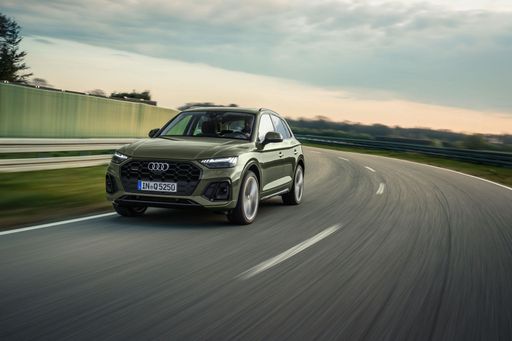 @ audi-mediacenter.com
@ audi-mediacenter.com
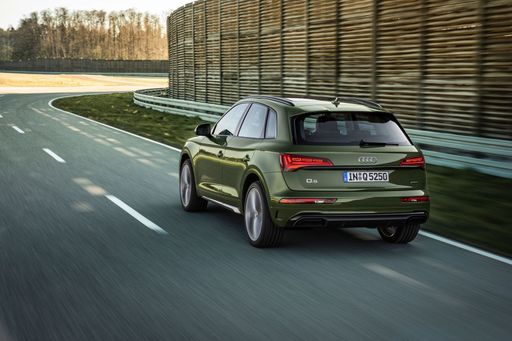 @ audi-mediacenter.com
@ audi-mediacenter.com
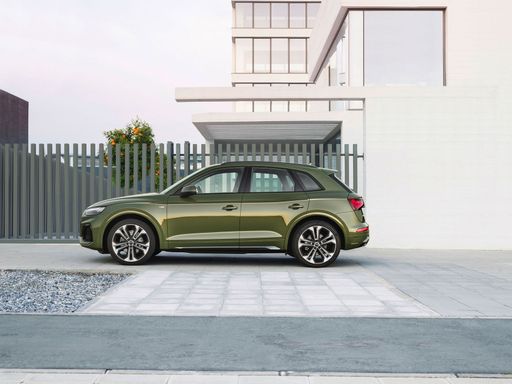 @ audi-mediacenter.com
@ audi-mediacenter.com
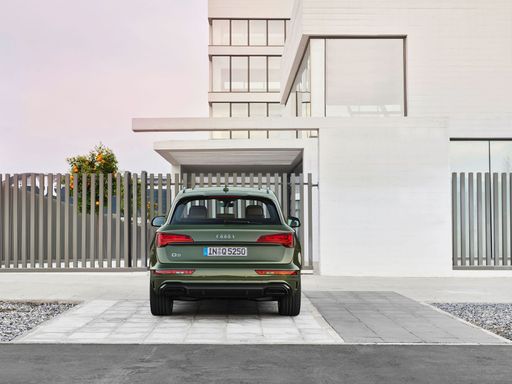 @ audi-mediacenter.com
@ audi-mediacenter.com
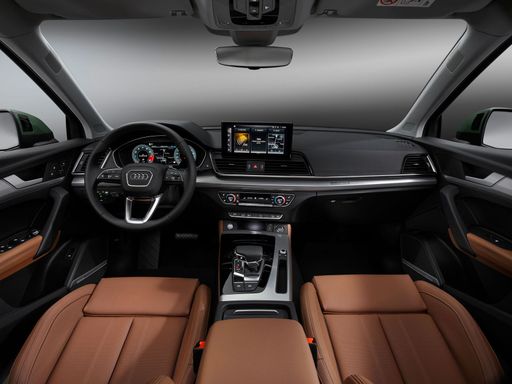 @ audi-mediacenter.com
@ audi-mediacenter.com
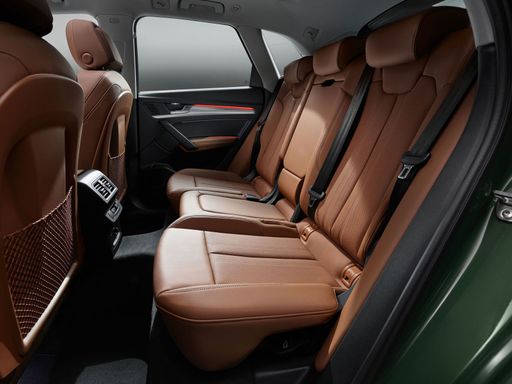 @ audi-mediacenter.com
@ audi-mediacenter.com
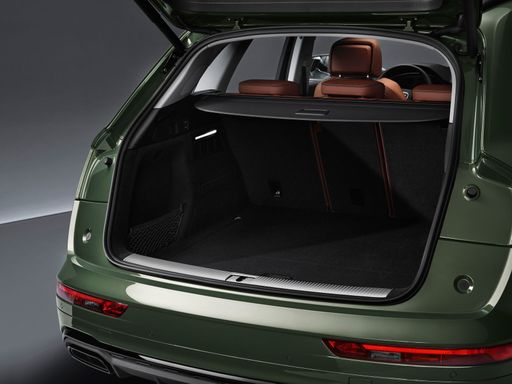 @ audi-mediacenter.com
@ audi-mediacenter.com
Tesla Model 3
The Tesla Model 3 stands out in the electric vehicle market with its sleek design and impressive performance capabilities. It offers a seamless driving experience that combines advanced technology with minimalistic interiors, creating a futuristic feel on the road. Additionally, its range and charging infrastructure make it a practical choice for both city commuting and longer journeys.
details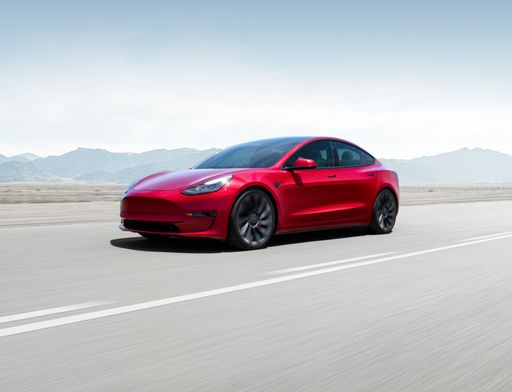 @ tesla.com
@ tesla.com
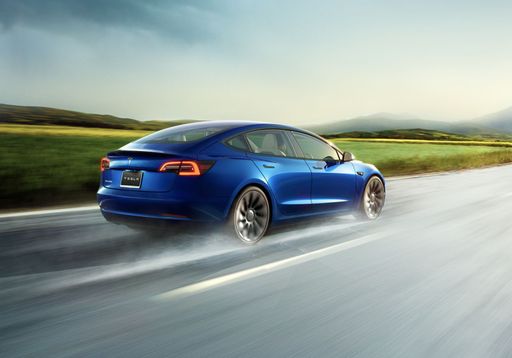 @ tesla.com
@ tesla.com
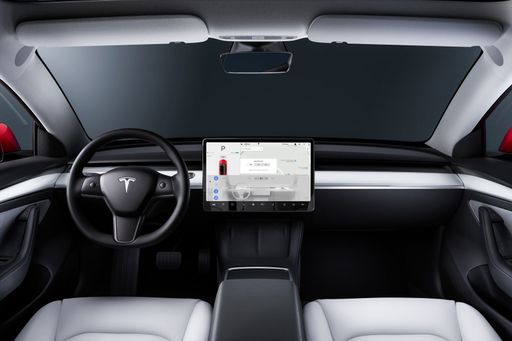 @ tesla.com
@ tesla.com
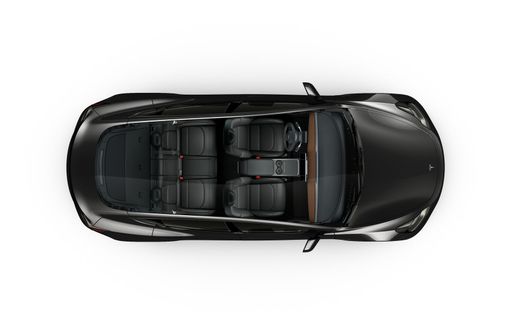 @ tesla.com
@ tesla.com
Audi Q5 vs. Tesla Model 3: A Comprehensive Comparison
The automotive industry is ever-evolving, with manufacturers consistently pushing the boundaries of innovation, performance, and efficiency. In this comparison, we examine two noteworthy contenders: the Audi Q5, a luxurious SUV, and the Tesla Model 3, a revolutionary electric hatchback. Both vehicles cater to different demographics, yet they share the common goal of providing a superior driving experience.
Engine and Performance
The Audi Q5 offers a variety of engine options, including diesel MHEV, petrol MHEV, and plug-in hybrid variants. With power outputs ranging from 163 to 367 HP, the Q5 delivers a robust performance profile. Customers can choose from front-wheel drive or all-wheel drive configurations. Acceleration from 0-100 km/h varies significantly across models, with some variants hitting the mark in just 4.5 seconds.
On the other hand, the Tesla Model 3 showcases its electricity-powered prowess. With options producing between 283 and 460 HP, it achieves remarkable acceleration, with a staggering 0-100 km/h time of just 3.1 seconds in its performance trim. The Model 3's electric motor provides instantaneous torque, translating into exhilarating acceleration and a fluid driving experience.
Interior and Space
When it comes to interior space, the Audi Q5 shines as a premium SUV. It comfortably seats five passengers with a trunk capacity ranging from 455 to 520 liters, depending on the variant. Premium materials and advanced infotainment systems enhance the driving experience, offering both comfort and utility.
Conversely, the Tesla Model 3 provides a minimalistic yet sophisticated interior, with ample room for five passengers. Although it has a smaller trunk capacity of 594 liters, it compensates with innovative storage solutions, including a front trunk (frunk). The interior is dominated by a large touchscreen interface that controls almost all vehicle functions, showcasing Tesla's commitment to modern technology.
Efficiency and Range
Efficiency is a crucial aspect for modern car buyers. The Audi Q5 features impressive fuel consumption rates, ranging from 5.6 to 8.4 L/100km, depending on the engine type. However, being a hybrid or diesel vehicle, its environmental impact varies across different CO2 efficiency classes, which range from E to B.
In stark contrast, the Tesla Model 3 excels in this area with outstanding electric range capabilities. Depending on the variant, it can cover between 513 to 702 km on a single charge. With zero tailpipe emissions, it proudly holds a CO2 efficiency class of A, appealing to environmentally conscious individuals.
Technological Innovations
Both vehicles are equipped with cutting-edge technology, albeit in different forms. The Audi Q5 integrates advanced driver-assistance systems, including adaptive cruise control, lane-keeping assistance, and high-tech navigation systems. Audi's MMI infotainment system is known for its intuitive interface and seamless smartphone integration.
Meanwhile, Tesla leads the charge in automotive innovation with its Autopilot system, which provides advanced semi-autonomous driving capabilities. Over-the-air software updates ensure that the Model 3 continually improves even after purchase. The minimalist controls and the state-of-the-art infotainment system further bolster Tesla's reputation as a tech-forward brand.
Conclusion: Which One Reigns Supreme?
Ultimately, the choice between the Audi Q5 and Tesla Model 3 hinges on individual preferences and priorities. If luxury, versatility, and a robust performance are at the forefront of your needs, the Audi Q5 is an unmatched contender. However, for those prioritizing efficiency, cutting-edge technology, and the thrill of electric driving, the Tesla Model 3 is hard to beat.
Both models represent the pinnacle of what their respective segments offer, yet they approach the driving experience from markedly different perspectives. Traditional versus modern, luxury versus sustainability—whichever you choose, you're guaranteed a vehicle that stands out in today's competitive automotive landscape.

|

|
|
|
|
Costs and Consumption |
|
|---|---|
|
Price
44800 - 78900 £
|
Price
34300 - 50100 £
|
|
Consumption L/100km
6 - 8.3 L
|
Consumption L/100km
-
|
|
Consumption kWh/100km
-
|
Consumption kWh/100km
13.2 - 16.7 kWh
|
|
Electric Range
-
|
Electric Range
513 - 702 km
|
|
Battery Capacity
-
|
Battery Capacity
62 - 79 kWh
|
|
co2
149 - 189 g/km
|
co2
0 g/km
|
|
Fuel tank capacity
65 L
|
Fuel tank capacity
-
|
Dimensions and Body |
|
|---|---|
|
Body Type
SUV
|
Body Type
Hatchback
|
|
Seats
5
|
Seats
5
|
|
Doors
5
|
Doors
5
|
|
Curb weight
1910 - 2115 kg
|
Curb weight
1822 - 1929 kg
|
|
Trunk capacity
470 - 520 L
|
Trunk capacity
594 L
|
|
Length
4717 mm
|
Length
4720 - 4724 mm
|
|
Width
1900 mm
|
Width
1850 mm
|
|
Height
1647 - 1656 mm
|
Height
1431 - 1440 mm
|
|
Payload
495 - 565 kg
|
Payload
303 - 333 kg
|
Engine and Performance |
|
|---|---|
|
Engine Type
Diesel MHEV, Petrol MHEV
|
Engine Type
Electric
|
|
Transmission
Automatic
|
Transmission
Automatic
|
|
Transmission Detail
Automat. Schaltgetriebe (Doppelkupplung)
|
Transmission Detail
-
|
|
Drive Type
All-Wheel Drive, Front-Wheel Drive
|
Drive Type
Rear-Wheel Drive, All-Wheel Drive
|
|
Power HP
204 - 367 HP
|
Power HP
283 - 627 HP
|
|
Acceleration 0-100km/h
4.5 - 8.6 s
|
Acceleration 0-100km/h
3.1 - 6.1 s
|
|
Max Speed
226 - 250 km/h
|
Max Speed
201 - 262 km/h
|
|
Torque
340 - 550 Nm
|
Torque
420 - 660 Nm
|
|
Number of Cylinders
4 - 6
|
Number of Cylinders
-
|
|
Power kW
150 - 270 kW
|
Power kW
208 - 461 kW
|
|
Engine capacity
1984 - 2995 cm3
|
Engine capacity
-
|
General |
|
|---|---|
|
Model Year
2025
|
Model Year
2023 - 2024
|
|
CO2 Efficiency Class
F, E, G
|
CO2 Efficiency Class
A
|
|
Brand
Audi
|
Brand
Tesla
|
Audi Q5
The Audi Q5 stands as a prominent figure in the luxury SUV segment, combining elegant design with cutting-edge technology and efficient performance. As of its latest models, the Q5 continues to impress with a multitude of engine options, including mild-hybrid and plug-in hybrid variants, catering to a range of driving preferences and environmental considerations.
Dynamic Performance and Engine Innovation
At the heart of the Q5’s appeal lies its impressive powertrain offerings. The range includes both diesel and petrol engines, featuring advanced mild-hybrid technology, which enhances efficiency and performance. The integration of the mild-hybrid system allows for reduced fuel consumption and lower CO2 emissions without compromising on power. With outputs ranging from 163 to 367 PS, the Q5 offers an exhilarating driving experience, whether purists opt for the robust diesel engines or the spirited petrol variants.
Impressive Fuel Economy
One of the standout features of the Audi Q5 is its remarkable fuel efficiency. With fuel consumption figures as low as 1.5 L/100km for the plug-in hybrid models, the Q5 sets a benchmark in its class. Coupled with a spacious fuel tank that can hold between 54 and 70 litres, drivers can enjoy extended journeys without frequent refueling stops. Even the conventional engines maintain competitive efficiency, making the Q5 an excellent option for eco-conscious consumers.
Advanced Safety and Driver Assistance Technologies
The Q5 is equipped with an array of advanced safety features and driver assistance systems that enhance the driving experience. Technologies such as adaptive cruise control, lane departure warning, and collision avoidance systems provide an additional layer of security for both driver and passengers. Furthermore, the Q5's infotainment system is intuitive and user-friendly, featuring connectivity options that keep you seamlessly connected on the road.
Luxurious Interior and Comfort Features
Step inside the Audi Q5, and you will immediately be captivated by its sophisticated cabin that boasts high-quality materials and attention to detail. The spacious interior comfortably seats five passengers, providing ample head and legroom. The rear seats can be adjusted to enhance cargo space, with boot capacity ranging from 455 to 520 litres, perfect for family outings or road trips. High-end audiovisual systems and customizable ambient lighting contribute to an atmosphere of luxury that Audi is renowned for.
All-Wheel Drive Versatility
Equipped with Audi's legendary quattro all-wheel drive system, the Q5 delivers exceptional grip and handling across various terrains and weather conditions. This capability ensures that drivers can have confidence whether navigating urban environments or venturing off the beaten path. The front-wheel drive variants also offer a commendable driving performance while maintaining efficiency.
Conclusion: The Ultimate Luxury SUV
The Audi Q5 is a masterful combination of luxury, performance, and practicality. With its range of powerful and efficient engines, advanced technology, and a focus on driver and passenger comfort, the Q5 sets itself apart in the crowded SUV market. Whether for commuting, family trips, or weekend getaways, the Q5 is designed to meet diverse needs and preferences with style and sophistication.
Tesla Model 3
Introduction to the Tesla Model 3
The Tesla Model 3 has quickly become a beacon of innovation in the world of electric vehicles (EVs), embodying a perfect blend of performance, technology, and sustainability. Known for redefining the electric car experience, the Model 3 stands as a testament to Tesla's commitment to pushing the boundaries of automotive design and engineering.
Design and Build
With its sleek fastback silhouette, the Tesla Model 3 is not only visually captivating but also aerodynamically efficient. Measuring at 4720 mm in length, 1850 mm in width, and 1441 mm in height, it optimally combines aesthetics with functionality. The Model 3 boasts a 594-litre boot space, offering ample room for everyday storage needs. Built with environmental efficiency in mind, its CO2 efficiency rating stands proudly at a perfect A, making it an ideal choice for the eco-conscious driver.
Powertrain and Performance
Under the bonnet, the Model 3 offers a diverse range of powertrains. It is available in both rear-wheel drive (RWD) and all-wheel drive (AWD) options, catering to different driving preferences. The electric motors deliver a remarkable power output ranging from 283 to 460 PS, translating to 208 to 338 kW. Depending on the variant, the Model 3 can accelerate from 0 to 100 km/h in a staggering 3.1 to 6.1 seconds. With a top speed between 201 and 262 km/h, the Model 3 promises an exhilarating driving experience.
Battery and Range
The Model 3 is equipped with a robust battery pack, available in capacities ranging from 62 to 79 kWh. This ensures an impressive electric range of 513 to 629 km on a single charge, catering perfectly to both city drivers and those who frequently embark on long-distance journeys. The energy consumption is between 13.2 to 16.5 kWh per 100 km, showcasing Tesla's efficiency in engineering cutting-edge EV technology.
Technological Innovations
The interior of the Model 3 is where technology takes centre stage. With its state-of-the-art autopilot feature, semi-autonomous driving is not just a promise but a reality. The vehicle continually updates over-the-air, ensuring that the software is always up-to-date with the latest features and improvements. Furthermore, the minimalist interior design, accentuated by a massive central touchscreen display, epitomises modernity and enhances the user experience with intuitive controls and navigation.
Cost Considerations
Given its advanced features and performance capabilities, the Model 3's price point ranges from €42,490 to €58,490. Monthly operating costs are estimated to be between €1,073 and €1,397, with per-kilometre costs between 42.9 and 55.9 cents, making it a competitively priced option within the premium EV market segment.
Conclusion
The Tesla Model 3 continues to lead the charge in the electric revolution, offering a compelling package of performance, innovation, and sustainability. For anyone seeking a modern, efficient, and technologically advanced vehicle, the Model 3 deserves serious consideration. With Tesla's groundbreaking vision and innovative engineering, this vehicle is not merely an investment in cutting-edge technology but also in a sustainable future.
The prices and data displayed are estimates based on German list prices and may vary by country. This information is not legally binding.
